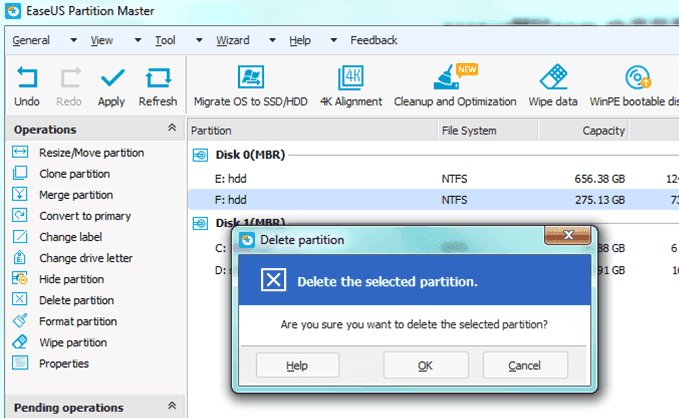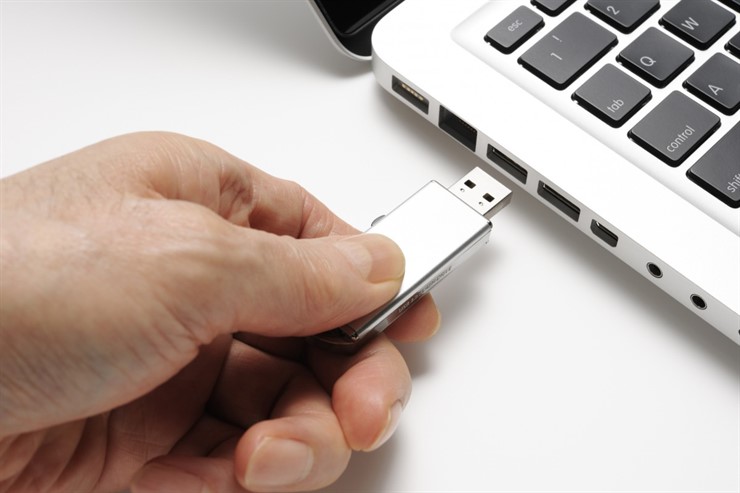

Choose FAT32 for less disk space wastage and more reliability.Ģ. Anything smaller than 32 GB that doesn’t require any security should be formatted in FAT or FAT32. Let me know in the comments if you disagree.ġ. So to break it down and make it simple, here are you options and how you should go about formatting a USB drive. When I did it on OS X, it was readable on the Mac and PC.
Best format for mac and pc usb drive windows 10#
I used Windows 10 to format a drive to exFAT, but it was not readable on OS X for some reason. Note: One piece of advice when using exFAT: if you can, format the drive on a computer running OS X. If you know the system you’re going to be using the USB device on supports exFAT, then it’s the best choice because of the performance benefits and the lack of size restrictions.
Best format for mac and pc usb drive install#
You can use exFAT on Linux, but you have to install the exFAT drivers first. Outside of those two operating systems, there are not a ton of other systems that support the exFAT file system. It can only be read on Windows XP and later (with service packs installed) and OS X Snow Leopard and higher. The major downside to exFAT is that it’s not nearly as compatible as the FAT file format. It’s got less overhead than NTFS and it gets rid of the size limits on volumes and files that are present in the FAT file system. If you’re formatting an external USB drive, then your best choice is exFAT. What’s so great about exFAT? It’s basically a mix of the good features from NTFS and FAT. However, if you really want the extra security, you can read my previous post on formatting USB drives with NTFS.

It’s got a lot of extra overhead that you only need if you’re running Windows. NTFS is usually only needed for internal hard drives running the Windows operating system. So when would you use NTFS? If you’re formatting a drive that is larger than 32 GB, you’ll only have the option for NTFS and exFAT. You can actually use a separate tool to format a USB drive in FAT32 that is larger than 32GB. Note that FAT32 can actually support volumes up to 2 TB, but Windows restricts the size to 32 GB also like FAT. Basically, you’re more likely to lose your data using FAT rather than FAT32. FAT32 is better than FAT because it has a smaller cluster size and therefore wastes less space on the disk.įAT32 is also more robust because it backs up the boot sector. However, the FAT file system has no built-in security, so anyone can read the files. The FAT file system is also faster and takes up less space on the USB device. In addition, the max file size on a FAT file system is 4 GB. Obviously, you cannot use FAT or FAT32 on a USB drive that is greater than 32 GB because the FAT file system only supports up to 32 GB volumes in Windows.

If you want the most compatibility with other operating systems and hardware devices, FAT is your best choice. You can virtually guarantee that by using the FAT file system format, you could plug your device into any computer running any OS or plug it into any electronic or digital device and have your data readable. The FAT file system is the default because it’s the most compatible file system format in the entire world. Now let’s talk about what each file system format accomplishes if you choose it. Now that you know this, your final choice is much easier since you have to choose from a limited set.

– If you try to format and external USB device larger than 32 GB, you will only see NTFS and exFAT. – If you try to format an external USB device smaller than 32 GB, you will see all the options. – If you try to format an internal hard disk that is larger than 32 GB, you will only see the option for NTFS. – If you try to format an internal hard disk that is smaller than 32 GB, you will see the options for NTFS, FAT and FAT32. Before we get into what each format is, let’s talk about the actual options you get when trying to perform a format. You can click on the drop down and choose from a couple of file systems: NTFS, FAT, FAT32, and exFAT.īy default, most people end up just going with FAT and there’s a good reason why it’s set as the default. When you right-click on a USB drive in Windows and choose Format, you get the following format dialog box:īy default, the file system for any external USB device will be set to FAT. So let’s start with the formatting dialog we all have come to know in Windows.


 0 kommentar(er)
0 kommentar(er)
